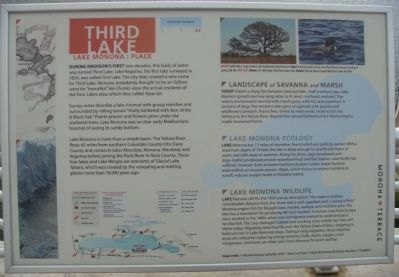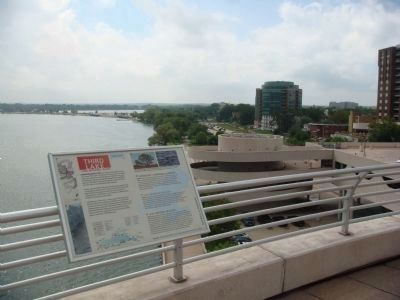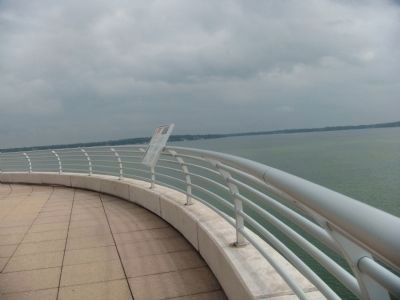Madison in Dane County, Wisconsin — The American Midwest (Great Lakes)
Third Lake
Lake Monona: Place
Survey notes describe a lake rimmed with grassy marshes and surrounded by rolling terrain "thinly timbered with Burr white & Black Oak." Prairie grasses and flowers grew under the scattered trees. Lake Monona was so clear early Madisonians boasted of seeing its sandy bottom.
Lake Monona is more than a simple basin. The Yahara River flows 45 miles from southern Columbia County into Dane County and connects lakes Mendota, Monona, Waubesa, and Kegonsa before joining the Rock River in Rock County. These four lakes and Lake Wingra are remnants of Glacial Lake Yahara, which was created by the retreating and melting glacier more than 10,000 years ago.
Landscape of Savanna and Marsh
Today there's a sharp line between land and lake. Until a century ago, Lake Monona spread over low-lying areas to its west, northeast, and east. This watery environment teemed with marsh grass, wild rice, and waterfowl. A savanna of large, fire-resistant oaks grew on uplands with grasses and wildflowers beneath. Prairie fires, driven by west winds, raced across the Isthmus to the Yahara River. Beyond the natural firebreak of the Yahara stood a maple-basswood forest.
Lake Monona Ecology
Lake Monona has 13 miles of shoreline, five of which are publicly owned. With a maximum depth of 74 feet, the lake is deep enough to stratify into layers of warm and cold water in summer. Along the shore, sago pondweed and large-leafed pondweed provide waterfowl food and fish habitat. Lake health has suffered, however. Each summer mechanical plant cutters target Eurasian watermilfoil, an invasive species. Algae, which thrives on excess nutrients in runoff, reduces oxygen levels in Monona waters.
Lake Monona Wildlife
Lake Monona still fits the 1834 survey description: "the water is shallow considerable distance from the shore and is well-supplied with a variety of fish." Monona anglers fish for bluegill, bass, muskie, walleye, and northern pike. The lake has a reputation for producing 40-inch muskies. Common carp from Europe were stocked in the 1880s when new immigrants wanted to catch and eat a familiar fish. The carp damaged habitat and stocking soon ended, but they still thrive today. Migrating waterfowl fly over the Yahara chain of lakes, stopping to feed and rest in Lake Monona's bays. During a long
migration, these stopover areas are critical for replacing energy reserves. Gulls, ducks, scaups, coots, mergansers, and loons are often seen from Monona Terrace's rooftop.
Erected by the Monona Terrace Community and Convention Center. (Marker Number 3.)
Topics. This historical marker is listed in these topic lists: Environment • Settlements & Settlers. A significant historical year for this entry is 1834.
Location. 43° 4.265′ N, 89° 22.823′ W. Marker is in Madison, Wisconsin, in Dane County. Marker can be reached from the intersection of Wilson Street and Martin Luther King, Jr. Boulevard, on the left when traveling west. The marker is in the West Circle of the William T. Evjue Rooftop Gardens at the Monona Terrace Community and Convention Center. Touch for map. Marker is at or near this postal address: One John Nolen Drive, Madison WI 53703, United States of America. Touch for directions.
Other nearby markers. At least 8 other markers are within walking distance of this marker. Mound City (within shouting distance of this marker); Black Hawk (about 400 feet away, measured in a direct line); Otis Redding (about 500 feet away); Pioneer Men and Women (about 500 feet away); State Office Building (about 500 feet away); The Fairchild Home (about 500 feet away); Olin Terrace (about 500 feet away); Madison Club (about 600 feet away). Touch for a list and map of all markers in Madison.
Credits. This page was last revised on June 16, 2016. It was originally submitted on September 7, 2010, by William J. Toman of Green Lake, Wisconsin. This page has been viewed 975 times since then and 36 times this year. Photos: 1, 2, 3, 4. submitted on September 7, 2010, by William J. Toman of Green Lake, Wisconsin. • Bill Pfingsten was the editor who published this page.



